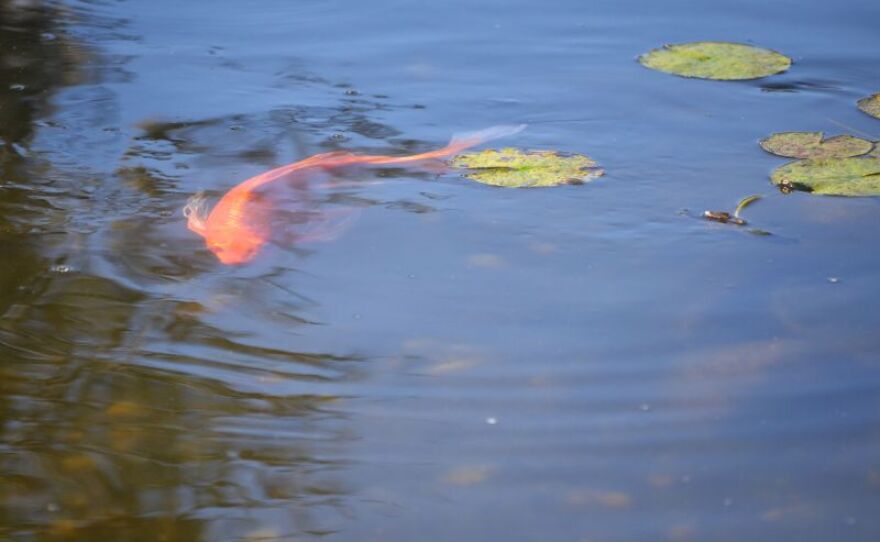Fisheries biologists are asking the public to keep an eye out this summer for a non-native fish in Lake Bomoseen.
The biologists are concerned about koi, a type of brightly colored ornamental fish. They are the same species of fish as the carp that have been in Lake Champlain since the 1800s. Koi are domesticated and much smaller, since they are raised in aquariums, but they have the same growth potential as the carp in Lake Champlain. Earlier this month, a Shoreham man shot a 44-pound carp with a compound bow. It鈥檚 the heaviest fish caught in the 45-year period that the state has recorded trophy fish catches.
Last summer a Lake Bomoseen resident found koi swimming near the shoreline.
鈥淏ecause they are a domesticated fish, they鈥檙e not spooky and they don鈥檛 run and hide at the first sound or sight of something, like a native fish would in Lake Bomoseen. These fish were just kind of lazily swimming around on the surface near somebody鈥檚 dock and they spotted them,鈥� said Shawn Good, a fisheries biologist for the Vermont Department of Fish and Wildlife. Unfortunately, by the time the fish were reported, they couldn鈥檛 be found again.
"When you put koi or any aquarium fish into the wild, it can have negative impacts or consequences on the native fish in that lake system." - Shawn Good, state fisheries biologist
Good said the koi were most likely released by aquarium owners and it鈥檚 something that happens far too often when aquarium or pond owners can no longer maintain the fish, or the fish outgrow their enclosure.
鈥淭hey think it鈥檚 good for both the fish and the environment, but it鈥檚 really not the case in both. But when you put koi or any aquarium fish into the wild, it can have negative impacts or consequences on the native fish in that lake system,鈥� Good said.
In addition to crowding out native fish, carp are somewhat destructive. They are bottom feeders and eat snails, clams and insects off the bottom. They鈥檒l also eat the roots and shoots of aquatic plants. And in feeding, they they can root up and sir up the lake bottom, making the water murky.
Koi are also very hardy fish that can withstand low temperatures and low oxygen environments. Good said lawn and garden shops sell small outdoor ponds that people put koi in, sometimes only 2 feet deep. 鈥淚n the wintertime that will freeze, almost to the bottom, leaving only maybe six or eight inches of unfrozen water at the bottom, and those koi will stay there all winter in that little narrow band of unfrozen water in the bottom of those ornamental ponds.鈥�
Good said it鈥檚 not the first time that domesticated koi have been found in Vermont waters.
鈥淭here鈥檚 a number of small ponds, mostly private waters and most of those ponds are connected to state waters through a small stream or something like that, so there have been instances in the past where we鈥檝e seen these things get out and they haven鈥檛 really spread yet," he said. "But it鈥檚 something that we鈥檙e always aware of and constantly trying to work to educate the public on.鈥�
has let its members know to be on the lookout for koi, and has asked people to call the Department of Fish and Wildlife right away if they are seen.
Meanwhile, officials are reminding people to never release unwanted aquarium fish into the wild because there鈥檚 always a chance that a population will establish which will always have some negative impact on native fish species.






